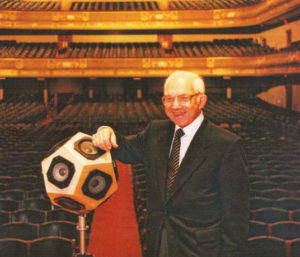An Acoustic And Computer Giant Passes
 One of the world’s foremost acoustic geniuses has passed. Dr. Leo Beranek and his company Bold, Beranek and Newman (BBN) have been been the leader in acoustic design for decades, designing the acoustics of the United Nations General Assembly Hall in New York, and concert halls at Lincoln Center and Tanglewood, among many others.
One of the world’s foremost acoustic geniuses has passed. Dr. Leo Beranek and his company Bold, Beranek and Newman (BBN) have been been the leader in acoustic design for decades, designing the acoustics of the United Nations General Assembly Hall in New York, and concert halls at Lincoln Center and Tanglewood, among many others.
Dr. Beranek taught acoustic engineering at Harvard and M.I.T. for more than three decades, and did quite a lot of groundbreaking research, including determining the noise standards for public buildings and airports that are still in use today. His biggest selling book, Acoustics, was originally published in 1954 (it was updated in 1986 and 2012) and still remains a textbook for acoustic engineering students around the world. His 1962 book, Music, Acoustics, and Architecture, which examined the acoustics of 100 concert halls around the world, is also considered a classic.
During World War II, as the director of Harvard’s Electroacoustic Lab, Dr. Beranek worked to improve voice communication between airplanes and the ground, which to that point was impossible. After the war, he was responsible for designing and building the first anechoic chamber, a critical tool in acoustic measurement today.
While his acoustic achievements were widely known and have impacted not only music listeners but society in general, his contribution to the world of computing may have a more lasting effect.
BBN was responsible for the precursor of the Internet as the company transitioned to fields other than acoustics, which Beranek felt was limiting. The company built the Arpanet for the Defense Department’s Advanced Research Projects Agency (DARPA) as a way for government agencies and universities to more easily share information. It was the first computer-based network in the world, and it went into operation in 1970. In 1972, BBN was the first to send an email message that used the symbol “@,” a process that we take for granted today.
Dr. Baranek led a good long life as he passed at 102 years old, but he’s one of the few people who’s work has had an unseen affect on all of our lives every single day. We’re going to miss him.

